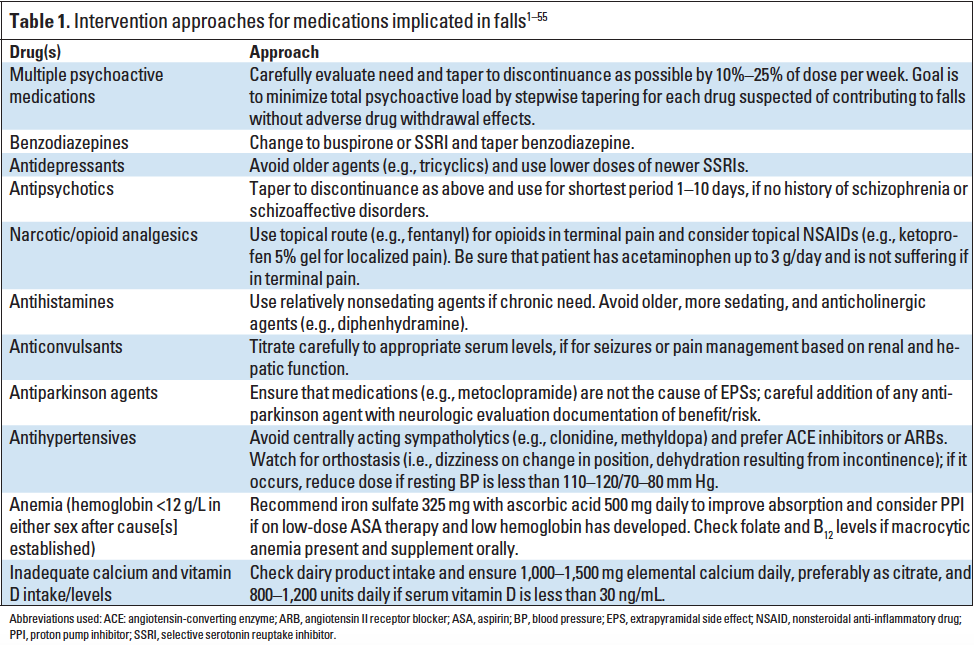Falling Short of Therapy: The Pharmacist's Role in Preventing Falls
Pharmacists are in pivotal positions to reduce morbidity and lower health costs by assessing and counseling elderly patients at risk for falls.
More than one-third of community-dwelling individuals aged 65 years and older experience a fall each year.1,2
Medically, falls result in pain, fractures, reduced mobility, traumatic brain injury, and, in some cases, death. Falls are also associated with decreased functioning and increased morbidity.
Economically, falls place a strain on both the individual and health systems. Between 2001 and 2008, about 4.05 million older adults presented to an emergency department with fall-related fractures.3
In 2013, direct medical costs for falls totaled $34 billion. By 2020, they are expected to surpass double that amount.4 These numbers do not reflect direct nonmedical costs (personal care services and transportation), intangible costs (pain and suffering), and indirect costs (loss of productivity).5
Properly performed interventions reduce fall rates by up to 30%, but they are most effective when saved for high-risk patients.
Screening patients for risk of falls is multifactorial. The process includes assessments of patients’ visual acuity, cognition, risk for orthostatic hypotension, activities of daily living, and gait and balance.6 Some patients may also have medical conditions that contribute to falls, which include dementia, diabetes, and osteoporosis.7
The Role of the Pharmacist in Fall Prevention
The pharmacist’s role in preventing falls is of high importance. Pharmacists’ drug therapy expertise is essential in the assessment of not only drug interactions, but also how medications may affect a diverse patient population.
Many medications have the potential to cause a variety of adverse drug effects. Antipsychotics, for example, are associated with a multitude of adverse effects that lead to increased risk of falls.
Some of these adverse effects appear behaviorally in the form of agitation, cognitive impairment, gait/postural disturbances, and extrapyramidal reactions. More concerning effects include dizziness, orthostatic hypotension, drowsiness/sedation, and blurred vision.7
Pharmacists can also play a special role in counseling patients with diabetes who are at risk for experiencing hypoglycemia, which presents through symptoms such as dizziness, weakness, and tachycardia. Pharmacists can inform diabetics that some signs of low blood sugar can be masked by concomitant medications such as beta-blockers, so they should look for signs such as sweating.
The following table describes the potential adverse effects of commonly used medications contributing to falls in the elderly.7
The following table suggests intervention approaches.8

Pharmacists should note the importance of starting low, going slow, and tapering. These methods all require careful monitoring.
Conclusion
Pharmacists hold indispensable roles within health systems and their communities. They are in a pivotal position to assess and counsel patients at risk for falls.
Carefully determining potential drug interactions and side effects can minimize risk and maximize therapeutic benefits. Employing risk-reduction strategies will impact both health and economic outcomes.
Eliminating falls will reduce suffering, morbidity, and overall direct and indirect health costs that ultimately impact patients and health systems.
References
1. Tinetti ME. Clinical practice: preventing falls in elderly persons. N Engl J Med. 2003;348:4249.
2. Rubenstein LZ, Josephson KR. The epidemiology of falls and syncope. Clin Geriatr Med. 2002;18:141-158.
3. Orces CH. Emergency department visits for fall-related fractures among older adults in the USA: a retrospective cross-sectional analysis of the National Electronic Injury Surveillance System All Injury Program, 2001—2008. BMJ Open. 2013;3(1):e001722. doi:10.1136/bmjopen2012-001722.
4. CDC. Costs of Falls Among Older Adults. http://www.cdc.gov/HomeandRecreationalSafety/Falls/fallcost.html
5. Carroll NV, Slattum PW, Cox FM. The cost of falls among the community dwelling elderly. J Manag Care Pharm. 2005;11(4):307-316.
6. Ganz DA, Bao Y, Shekelle PG, Rubenstein LZ. Will My Patient Fall?. JAMA.2007;297(1):77-86. doi:10.1001/jama.297.1.77.
7. Ruddock B. Medications and falls in the elderly. Drug Information and Research Centre. 2004:137(6):17-18.
8. Cooper, JW. Burfield, AH. Medication interventions for fall prevention in the older adult. J Am Pharm Assoc. 2009;49:e70-e84. doi:10.1331/JAPhA.2009.09044.
